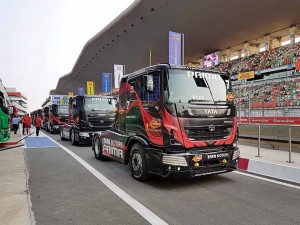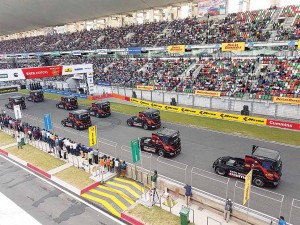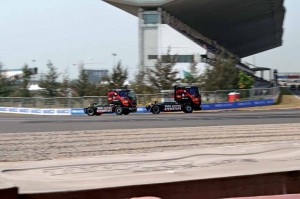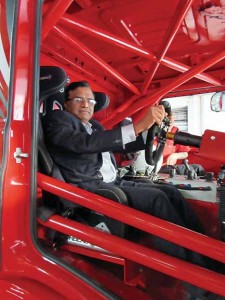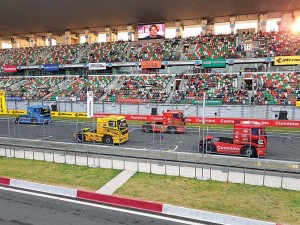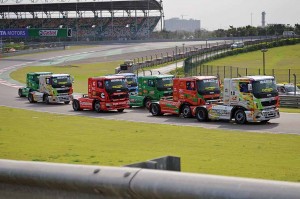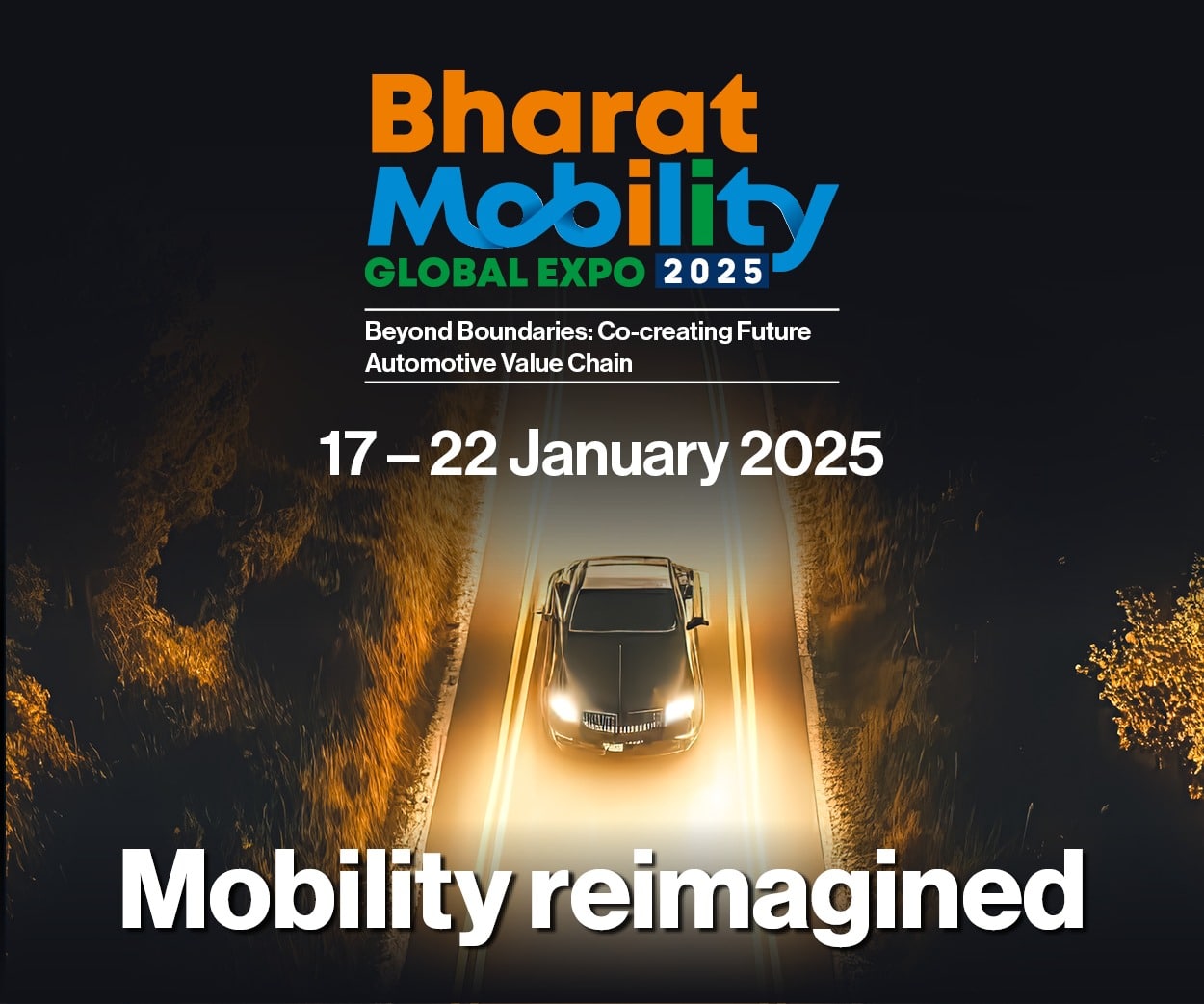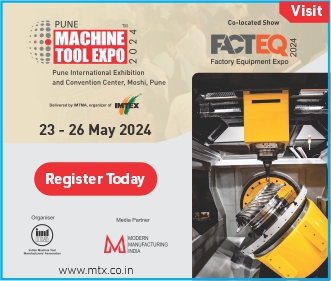The fourth edition of Tata Prima T1 Truck Racing Championship held at Delhi made for a fine display of excitement and grit.
Story by:
Anirudh Raheja
The 1000 hp Tata Prima T1 race truck in a shade of gold made for an exciting welcome to the world of truck racing. It was parked right in front, and added a new perspective to the fourth edition of Tata Prima T1 truck racing championship on the morning of March 18, 2017, at the Buddh International racing circuit, Greater Noida. Another 1000 hp truck, a colour of bright red, stood in the garage. Adding yet another perspective to the race was a charming women truck driver, Stephanie Halm, from Germany. She represented the women and girls involved in this motorsport, may it be Veena who trains race truck drivers or all those girls who top up water or fill fuel in the race trucks.
The third and the last Formula 1 race at Buddh International Circuit was held in 2013. The Tata Prima T1 truck racing championship has outlived the Formula 1 race at the Buddh International racing circuit. Reflecting upon the determination of Tata Motors and all those involved, the series endeavours to ensure that truck drivers are respected.
The other reason, said Ravi Pisharody, Executive Director, Commercial Vehicles, Tata Motors, before the race, that it is an opportunity for the company to showcase a distinctive partnership between sporting and technological excellence, and to introduce new innovations and trucking heroes. Mentioned R Ramakrishnan, Senior Vice President, Commercial Vehicles, Tata Motors, “The 1000 hp racing truck showcases our technological prowess, and the role played by our suppliers.”
Averred R.T. Wasan, Vice President (Commercial), Commercial Vehicles, Tata Motors, “Tata Motors has always been at the forefront of introducing first-of-its-kind innovations. Through truck racing, we conceptualized another unique property called the T1 Racer Program. Called TRP 2.0, the racer program received strong response from Indian truck drivers. A decision to retain the last year’s drivers was taken, and they were grouped under the ‘Champion Class’. The new drivers were grouped under the ‘Super Class’. Involved in the process were Tata Motors, Accenture, Moma, Dreamworks and MangoOrange. A good 3300 driver nominations were received for the ‘Super Class’. Of these, 200 were shortlisted. Further filtration and a comprehensive training programme led to the selection of 10 drivers. Opined Wasan, “We are confident that the Indian drivers will excel in the sport, and in their respective professions.” Vicky Chandhok, Mentor, T1 Prima Truck Racing Championship, mentioned that this is one of the most awaited events on the Indian motorsports calendar.” Describing the TRP2.0 as the most comprehensive training program, Vicky said, “What makes it more fulfilling is the sense of purpose it brings, not only to the motorsports scene, but how it relates with the Indian commercial vehicle industry and with the profession of truck driving.” Tony Iddon, Director, FIA, hinted at a world trucking series with the best race drivers from each country participating. Steve Horne, Organiser, BTRA (British Truck Racing Association), and the one who helped Tata to bring truck racing to India, credited Tata’s vision.”
New Cummins ISG engine powers 1000 hp Prima T1
Two new 1000 hp Tata Prima T1 Racing trucks were the centre of attraction among others at the 2017 Tata Prima T1 Racing Championship. A colour of bright red and glittering gold, the two trucks were powered by Cummins ISG12, 11.8-litre in-line six-cylinder common-rail diesel engine sourced from China. Sources in the know of the development claim that Cummins India Limited will introduce this engine in India in a few months from now. In the two engine racing trucks, the engine, which, in a production truck, produces between 440 hp and 540 hp, does 1040 hp of peak power and 3500 Nm of peak torque. Paul Sowerby, Chief Technical Officer, Cummins India, and Managing Director, Cummins Research and Technology India Ltd., mentioned that the engine measures as long as a Royal Enfield in length and weighs 850 kg. “This engine sips one litre of diesel every three kms and inhales air the size of a football stadium,” he stated. “It needs a lot of air”.
Setting a benchmark in weight, performance, fuel efficiency and cost of ownership, the engine, employing composite materials and an innovative block design, retains its structural strength despite being lighter, compact and quiet. Using wet liners according to Dr. A K Jindal, Head – Engineering Research Centre, Commercial Vehicles, Tata Motors, the ECU (engine mapping, or flashing) of the ISG engine has been tweaked to produce almost double the power the same engine in a road-going truck produces. If this indicates the progress in engine technology with the ISG series capable of meeting Euro6 emission norms, Cummins has also tweaked the current racing Prima’s ISLe engine. The ISLe engine now produces 400 bhp @ 2100 rpm over the last season truck’s 375 hp. Simon Reid, the international championship driver at T1 Racing said that the difference in power is noticeable. “The speeds have gone up.”
Resulting in higher speeds, the ISLe engine has been a crucial link in making the T1 Prima Racing truck reliable. While the 1000 hp trucks is hand-built, the current 4×2 Primas are production oriented. They are taken off the production line. Said Simon, “The good part about these trucks are that they are very reliable”. The current racing truck, according to Paul, can now achieve a top speed of 145 kmph over the top speed of 135 kmph last year. The ISG engine 1000 hp race Prima in comparison is able to achieve top speeds in the region of 160 kmph. A high-point of the new ISG engine is its highly advantageous power to weight ratio and the electronic nature, which opens up numerous possibilities to tweak the truck such that it is one, truly mean racing machine. The 1000 hp Prima racing truck can do 0 to 100 kmph in under 10 seconds!
- Bhushan Mhapralkar
Indian drivers show their mettle
Indian drivers proved that they are second to noe inn the fourth season of Tata Prima T1 Truck Racing Championship
The qualifying session on March 18 saw the 10 ‘Super Class’ drivers (Gurujant Singh, Pitambar, Mahendar Pratap and Shivnihal Singh from Uttar Pradesh; Mohabat Singh and Mubarik from Rajasthan; Vikramjit Singh and Dharminder Singh from Punjab; Harish from Haryana, and Himanshu Kumar from Bihar) demonstrate their desire to excel. Around the trimmed version of the track that had a span of 3100 m, the ten drivers fought tooth and nail. They had demonstrated their abilities during their training at Chennai, but on this track, they were moving as if it were a familiar territory. With 400 hp available at the tip of the right pedal, it was a matter of judgement and luck to end up at the front. With the trucks capable of reaching higher speeds this season than those during the last season, average speeds of over 97kmph were regularly clocked. Less than four seconds separated the top ten Super Class drivers. Across straights, the drivers regularly achieved speeds of over 130kmph. Under the first provisional set of laps of free practice, it was Mubarik who clocked the fastest lap time of 1.50.386 seconds, marking a clear lead of 1.8 seconds over Pitambar who registered his personal best time of 1.52.125 seconds. Dharminder Singh came third with a lap time of 1.52.744 seconds, 2.538 seconds behind the winning driver. Gurujant Singh came fourth, clocking a time of 1.52.819 seconds, 2.433 seconds behind Mubarik.
The qualifying race saw the action get fierce and exciting. The roar of the machines, and the smell of burnt rubber added a new meaning to the effort. It made for a noisy environment, but the kind that was as exciting as it would get. What added to the excitement most was perhaps the thought of having those very men behind the wheel of the race Primas, which at other times, drive trucks on Indian roads for their livelihood. It was to be their day of reckoning. The quest to win began reflecting from earlier on as the race started. Speeds began rising. Grabbing the lead position at the very first corner of the race, Mubarik started coming under pressure from the second placed Pitambar. In an attempt to retain his lead, Mubarik started pushing harder. This was going to be one exciting race even though it felt like these drivers were careful. Were cautious about their trucks. A tough proposition for certain!
At the corner before the long straight, Mubarik ran wide. Sensing an opportunity, Pitambar promptly pulled past. Mubarik slipped to second position. Mubarik’s best lap time was 1.50.386 seconds, 0.7 seconds slower than his best time during free practice. Pitambar recorded a lap time of 1.50.422 seconds to clinch the pole position in the Super Class qualifier. Dharminder Singh, who came third in the practice session could not retain his position. He slipped to eighth position by the time the race ended. Gurujant Singh, who finished fourth in the practice race, turned out to be quicker than Dharminder Singh. Sticking to the race lines he was able to clock quicker times. He came third with a lap time of 1.51.426 seconds, a little over a second slower than the race winner, Pitambar. The second position was promptly retained by Mubarik, clocking a lap time of 1.51.114 seconds, 0.692 seconds behind Pitambar. Mohabat Singh came fourth, clocking a lap time of 1.51.421 seconds, 1.099 seconds behind Pitambar. Vikramjit Singh came fifth, and Shivnihal Singh came sixth.
Super Class final
Pitambar was first on the grid with Mubarik and Gurujant Singh on his tail as the race began at 2.30 pm on March 19. Trucks charged into the first right-hander with Pitambar maintaining the lead. It was behind Pitambar that excitement started building up between Mubarik and Gurujant Singh. On one of the turns, the Primas of Harish and Vikramjit made contact. Harish lost his left side rear view mirror. Undaunted he carried on, reflecting once again the winning spirit of this series. By the end of first lap, Pitambar extended his lead by two seconds over Mubarik. Starting sixth from the grid, Shivnihal Singh took advantage from the low air resistance of Vikramjit’s and Mohabat Singh’s Primas, and on turn four, just after the straight, took an inside line to overtake Mohabat Singh. It did not take long for Shivnihal Singh to get close to Harish who was placed fourth. The fight for the fourth place became fierce. Under pressure from Shivnihal Singh, Harish ran wide on turn three in third lap. Shivnihal slipped through to get into the fourth position. The fight moved a notch higher as Shivnihal Singh started exerting pressure on Vikramjit, placed third.
Not to give up, Harish kept exerting pressure on Shivnihal. In lap five Harish overtook Shivnihal between turn four and five to get back into the fourth position. Harish could not maintain the lead for long. Shivnihal once again grabbed the lead at the start of lap six. Clocking the fastest lap time of 1.50.677 seconds in lap six, Mubarik, in lap seven, on turn three, went out. He lost his track position and fell down to the ninth position. By the end of lap seven, Pitambar had extended his lead by over 25 seconds. Vikramjit and Shivnihal Singh were less than two seconds apart. None of the two were willing to cede ground. They were both eyeing the second place. On lap eight, Harish, in at attempt to take the inside line over Vikramjit and Shivnihal Singh, went off the track on turn one. While this was happening, Gurujant Singh moved past Mohabat Singh to gain fourth position. Vikramjit, in a serious attempt to save his second position went out on turn three. Shivnihal Singh and Gurujant Singh promptly moved ahead. When the chequered flag came down at the end of lap ten, Pitambar was in a firm lead. He was a good 33.266 seconds ahead of the second placed Shivnihal Singh, who clocked the fastest lap time of 1.51.715 seconds in lap eight. Gurujant Singh came third with the fastest lap time of 1.52.912 seconds in last lap. Harish came fourth, and Hisamshu kumar Ray came fifth.
The Champion Class
The Champion Class saw the 10 Indian drivers of the last season fight fierce battle. They would also reflect upon the next level of training imparted to them under the TRP2.0 program on technical aspects of racing safely. The 10 Champion Class drivers included defending champion Nagarjunaa from Andhra Pradesh; Mohd. Parvez and Rabinder Yadav from Bihar; Bikash Mahato and Shankar Singh from Jharkhand; Bhag Chand and Raju Lal Gurjar from Rajasthan; Malkeet Singh from Uttar Pradesh; Jagat Singh from Haryana, and Gobind Singh from Punjab.
In the qualifying race Nagarjunaa took the lead to show that he still had it in him. He registered the fatest lap time of 1.50.294 seconds in the qualifying race. Malkeet Singh gave him a tough fight, but could not snatch the lead. He clocked a fastest lap time of 1.51.706 seconds in lap 9, 0.412 second behind Nagarjunaa. From Nagarjunaa’s driving style, it was aptly clear, right from the start, that he had a good understanding of the track. He kept a tight line through the turns even as he pushed hard to maintain the lead. A new entry, Shankar Kumar Singh proved his mettle by clinching the third spot during the qualifying race. Last year’s winner from the first race of Indian drivers, Jagat singh completed the second row with Shankar. Where Shankar managed to clock 1.51.778 seconds lap time, Jagat managed to clock a lap time of 1.52.010 seconds.
The final race for Champion Class started at five in the evening. Nagarjunaa remained focused from the very start of the race. At the very first corner in the first lap, in an attempt to gain track position, Shankar Kumar Singh spun out into the gravel and lost his track position. He fell to the seventh position. Second placed qualifier, Malkeet Singh gave a strong fight to Nagarjunaa. Nagarjunaa kept his cards close to his chest, and put up a well calculated fight, extending the gap between him and Malkeet Singh by a shade under two seconds in the very first lap of the race. He clocked the fastest lap of the race in the process, further extending his lead over others. Despite falling back, Shankar Singh fought back to regain positions. In the second lap he overtook Jagat Singh to move into the sixth place. In the very next lap, he grabbed the fifth place from Rabinder Yadav.
In their attempt to out do each other, Rabinder Yadav and Jagat Singh moved out of the track while negotiating a turn, and presented Bikas Mahato an opportunity to move up. Nagarjuna continued to be in firm lead of the race with Malkeet, Bhag Chand and Gobind Singh in hot pursuit. On lap five, Malkeet Singh clocked the fastest lap of the race. In the very next lap Nagarjunaa responded by clocking his personal and fastest lap of the race at 1.50.562 seconds. The anxiety to win was palpable as the Champion Class drivers fought a fierce battle. Even at the back of the grid, Raju Lal Gurjar fought a hard battle with Rabinder Yadav to gain eighth position in lap seven. Even till the end of race, Malkeet Singh fought hard and stayed within overtaking range of Nagarjunaa. When the chequered flag came down at the end of lap 10, Malkeet was a little over three seconds behind race winner Nagarjunaa, and ahead of third placed Bhag Chand by over 12 seconds.
The making of the 1000 hp racing Prima
Truck racing championship is the second most popular spectator event after Formula 1. Tony Iddon, Director, FIA, said this on the occasion of the fourth Tata Prima T1 Racing Championship in Delhi. Appreciating the ideas, initiatives and innovations involved, he said, he likes the way Tata has taken this sport in an exciting way to the man in the truck in India. Announcing that truck racing series are held in nine countries in Europe apart from Brazil, China and India, Tony averred that truck racing has become a marketing platform for all those who are involved in trucks. “The new, 1000 hp truck is exciting. I believe it will make it to Europe,” he said. The racing trucks participating in the European championships produce over 1000 hp. It is the drivers who develop these trucks with manufacturers providing engines or any other assistance needed. In India, Tata Motors took the initiative of starting the truck racing sport four years ago. It has once again taken the initiative to build a 1000 hp truck.
The 1000 hp race truck, according to Dr. A K Jindal, Head – Engineering Research Centre, Commercial Vehicles, Tata Motors, is built around the engine. The 12-litre Cummins in-line, six-cylinder ISG engine is placed mid-ways to ensure an equal weight distribution. There are no cross members between the two ‘C’ sections of the chassis when compared to the current racing Primas, which have been taken off the assembly line at Jamshedpur and fitted with the necessary racing gear, and suitably modified. The 1000 hp truck is hand-built almost. With cross members only at the front and rear, for torsional rigidity, sub-frames have been suitably engineered, both on the inside of the ‘C’ long members and on the outside. With the engine positioned mid-ways, there’s not much space between the six-speed gearbox with hydraulically assisted shifter and the Dana differential. Compared to the current racing truck, the wheelbase of the 1000 hp truck is slightly longer than that of the current truck. Pointing at the piping and its connecting joints for cooling coils, Dr, Jindal revealed that components found on F1 cars have been used in this truck. “The electronic nature of this truck, which makes its CAN-bus enabled, has ensured the packaging of many advanced technologies,” he said.
A tablet-like screen instead of a dashboard is indicative of the electronic nature of this truck. With Steve Horne and his son’s company Cherwell Trucks involved, the 1000 hp race truck has its intercooler located at the front, and behind the grille. The radiator is below, and behind the bumper. It is placed at an angle. Both, have water jets aimed at them to make certain that the temperatures do not rise quickly, and affect the performance. The jets execute the task of ensuring good charge density, and production of good amount of power by keeping the engine operating temperatures low. There are two cooling fans inside the closed duct too. The torque curve of this ISG engine, which produces almost twice the power it does in a production truck, is claimed to be wide and flat. For such an amount of power it was necessary to achieve good stability. The 1000 hp truck runs on wider tracks as compared to the current racing Primas. Featuring three-step adjustable Penske dampers with displacement sensors, the 1000 hp racing truck is fitted with two leaf springs at each corner. Its steering column is uniquely routed for reach. The steering wheel is of the quick detachable variety. The rear wheels sport light-weight aluminium wheel rims whereas the design of the front wheel rims is such that the offset is almost flush to that of the wheel arches. This was done to ensure that no damage is incurred in case of a contact with other truck while racing. The day cabin on the 1000 hp truck is lower as compared to the current racing Primas. It looks very similar to the cabin of the Tata Daewoo Prima cargo trucks in Korea, and has been suitably strengthened apart from the fitting of the roll cage. The cabin mountings are on the side of the long members rather than on the top of them.
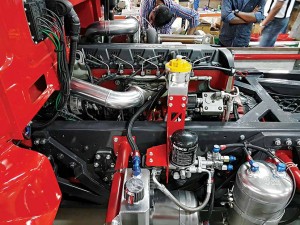

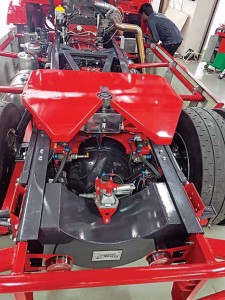
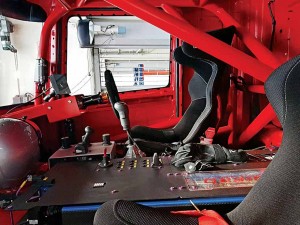
1000 hp truck features Wabco air disc brakes. This makes the 1000 hp truck the first to feature this tech in India. Apart from reducing the weight of the braking system, the air disc brakes make for more efficient braking, and enable quick changing of the wearable parts like brake pads. To keep the brake temeprature low, the truck comes with brake disc cooling. Air pressurised water is fed to brake discs through sensor based nozzle Jets. Primary cooling is through continuous water flow. The secondary jets operate automatically upon rise in of brake disc temperature. The sensors judge the rise in temperature. Water for brake cooling is stored in three aluminium tanks with a total capacity of 180-litres. Fuel is stored in a 80-litre aluminium tank and fuel cooler. Apart from the power cut off switch on a massive looking centre console inside the cabin, there is another one at the rear. The specifications demand their presence. Coming back to the electronic system of the truck, there are these small switches on the centre console that are used to control, even over ride some of the functions on the move if the driver feels the need. The CAN-Bus enabled electronic system is app.-based and Wi-Fi enabled to allow remote diagnosis. There is provision for fitting of rear view camera, GPS, etc. Tyres are from JK Tyres, and the size of 315/70 R22.5. These were specially developed by JK Tyres for racing, and carry a special racing compound. “We need better sidewalls to sustain high pressure cornering and braking forces. The racing tyres with special compound have tapered tread. It has special wire wrap and HE wire that reduces skidding and slipping during challenging conditions” Sanjay Sharma, Head-Motorsport, JK Tyre.
- Bhushan Mhapralkar
David Vrsecky grabs Pro Class title
David Vrescky bagged the Pro Class title in the fourth season of the Tata Prima T1 Truck Racing Championship.
David Vršecký, the most successful Czech trucker in history, and double European champion in 2008 and 2009, grabbed the Pro Class title at what could be termed as the most fiercely fought race out of the races held over the two days of the fourth season of Tata Prima T1 Truck Racing Championship. A holder of several world speed records in trucks, David made it to the race series at the Buddh International Circuit, Greater Noida, along with 11 European and British truck race drivers – Stephanie Halm from Germany; David Vrsecky from Czech Republic; Norbert Kiss from Hungary; Ryan Smith from UK; Adam Bint from UK; Gerd Korber from Germany; Oliver Janes from UK; Shane Brereton from UK, David Jenkins from UK; Simon Reid from UK, and Thomas Robineau from France. Both, David Jenkins and Simon Reid participated in the Prima T1 truck racing championship last year. They represented Team Cummins this year. Stephanie and Ryan represented Team Castrol Vecton. Antonio and David Vrsecky represented Team Dealer Daredevils. Norbert and Adam Bint drove for Team Tata Technologies. Gerd and Oliver drove for Team Dealer Warriors. Shane and Thomas drove for the new team entry, Team One World Racing. Team One World Racing replaced Team Tata Finance.
It was quite warm as the Pro Class qualifier race got off to a heady start. The contingent of foreign race drivers seemed to be in no mood to let go off any opportunity to win. It was clear at once, the Pro Class race would be exciting, period. The Pro Class drivers did not seem to exercise caution; it would be a fight to the finish. Ryan Smith posted a lap time of 1.48.470 seconds with Norbert Kiss a good 0.6 seconds faster than him. Norbert posted the fastest qualifying lap time of 1.47.881 seconds. Stephanie showed that she was no less. She clocked a lap time of 1.48.470 seconds. From what happened on the track, the results threw a big surprise. Top three drivers incurred penalties for exceeding track limits including cutting corners. Ryan was pushed to the last position. Stephanie was pushed to the ninth position, and Norbert Kiss was pushed to the fifth position. Clocking a fastest lap time of 1.48.641, and crossing the finish line in fourth position, David Vrsecky was announced as the winner. Antonio was adjudged second. He clocked the fastest time of 1.49.223 seconds in the second lap, and kept ahead of Korber, who came third. Oliver came fourth. With the Team Dealer Daredevils winning the first and second position in the qualifier race, it was time to celebrate.

The Pro Class race 1
The race fever was at its peak as the twelve Pro Class race trucks took off on March 19 with David in the front. A fierce battle it would be, and without much ado. The entire grid came to a halt between turn four and five however during the formation lap. This led to a second formation lap, and a rolling start. As the race began, Vrsecky and Antonio got off to a good start. The Dealer Warriors team consisting of Korber and Oliver exerted pressure on the front row from the beginning. At turn three on lap two, Adam Bint of Team Tata Technologies established contact with Oliver’s Prima. This allowed David Jenkins, driving a Cummins race truck in a bright shade of red, to gain a track position. On the very next turn, using slip stream of the truck ahead, Korber overtook Antonio by taking the inner line. Last year’s race winner, David Jenkins overtook Antonio to move into the third place.
It was turn three that proved to be tricky for many drivers in this class. In lap three, Ryan Smith, in an attempt to take the outside line and overtake Simon Reid, ran wide and got his rear tyres spinning in the gravel area. In the same lap, Stephanie pushed Simon off the track to gain a track position. She pushed harder. In no time Robineau, placed eighth, was under pressure from Stephanie. Stephanie was however not successful in displacing Robineau. In a bid to save his position, Kiss, placed fifth, clocked the fastest time of 1.49.579 seconds in lap four. Undaunted, Oliver, placed fourth, continued to hold his position. He too clocked the fatest time of 1.49.283 seconds in the same lap. In his attempt to overtake Oliver, Kiss continued to push himself. On turn three, while trying to pick up an outside line, Kiss made contact with Antonio and went off the track. He got stuck in the gravel with no traction. It was the same place where Reid had run off into a gravel patch, and continued to be stuck. Yellow flags came out, and the race marshals took over. The race was brought to a halt. It was red flagged in lap six after considering the safety aspects for the drivers. David Vrsecky took the first position, and Gerhard Korber took the second position. David Jenkins took the third position.
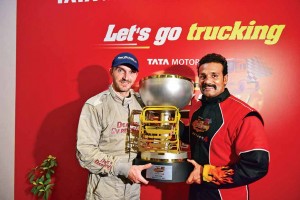
The final race of
the evening
It was half past five by the time the final race of the evening was flagged off. As the lights turned green at the end of formation lap, it was David Vrsecky who took off. He clocked the fastest lap time of 1.47.204 seconds. Keeping the lead, Vrsecky had Korber exert pressure on him. Korber tried taking an inner line on turn three, but Vrsecky skillfully stalled Korber’s move. Such was the fervor, speeding past turn four, Oliver and Ryan came to run parallel. They did so until the next turn. The two almost ran off the track on turn five, allowing Norbert to overtake. He moved into fourth position. In lap three, Simon Reid and Oliver Janes fought fiercely to earn the sixth position. This fight too took place between turn four and five. Reid managed to get ahead of Oliver.
With 11 laps to go, Norbert kept on pushing. He took the precaution to not repeat the same mistake, which he commited in the first race. He kept on exerting pressure on David Jenkins for the entire lap. David managed to keep the third position to himself even as Norbert seemed to display his fine racing skills. Norbert did not let Jenkins to consolidate at the third position. On lap five, Stephanie stepped up her fight. She began exerting pressure on Oliver Janes. A fierce fight took place between turn two and three. Stephanie however failed to overtake Janes. Not to give up, she continued to build pressure on him. On the next straight she made her move. Taking an inside line, She overtook Oliver to move into the seventh place. On lap seven, David Jenkins lost his track position to Simon Reid and slipped to sixth position. Next three laps proved to be fierce. A battle raged for the second position. Korber and Kiss continued to engage in a fierce fight that saw Kiss moving into the second place ahead of Korber. This happened in lap nine, and on turn four. As the race neared the last three laps, it looked like the first three positions were more or less final.
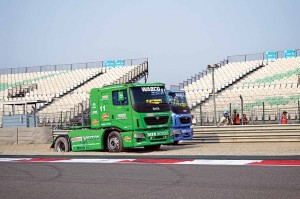


Down the field, the battle between Antonio and Robineau continued to rage. The two made contact on the straight between turn two and three. In (second last lap) lap 14, Norbert made an attempt to overtake Vrsecky. He posted his personal best time of 1.48.445 seconds in doing so. Vrsecky did not seem to be in any mood to give Norbert a chance however. Janes, in an attempt to make a serious comeback after starting fourth off the grid, tried hard to overtake Adam Brint on the last lap. There was an impact, and Janes had his rear tyre peel off the rim. At front, David Vrsecky crossed the finish line, confident of his abilities and that of his racing Prima. Kiss was placed just 0.257 seconds behind Vrsecky when he crossed the finish line. Korber, six seconds behind the winner, came third. Ryan came fourth, and Simon came fifth.



